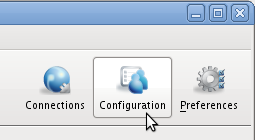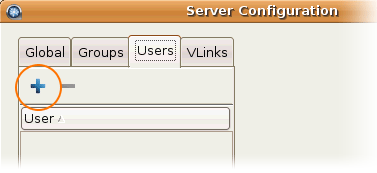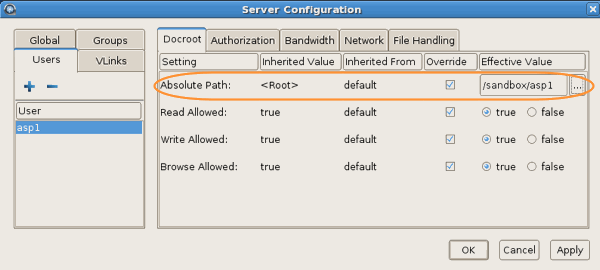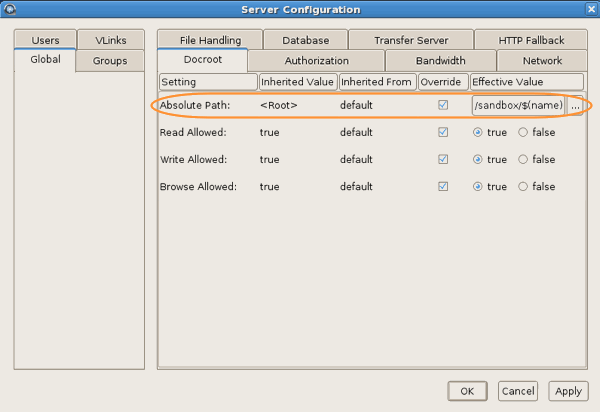Your Aspera server uses your system accounts to authenticate connections. These
system accounts must be added and configured before attempting an Aspera transfer.
When creating transfer accounts, you may also specify user-based settings, including
those for bandwidth, document root (docroot) and file handling.
Note: You must create systems accounts for transfer users before they can be
configured on your Aspera server. After these system accounts have been created
and initialized on your local host, follow the steps below to configure their
transfer accounts.
-
Set up the system user for Web UI authentication.
On top of SSH authentication, Connect Server uses Apache's authentication to
authorize Web UI access. To set up a system user for Apache authentication
(asp1), use the htpasswd command to set up the user for
Web UI.
$ htpasswd /opt/aspera/etc/webpasswd asp1
NOTE: If you have Apache 2.4.4, the above command may not work.
You are prompted to enter a password, but you may get authentication
errors when attempting to view the site. As a workaround to this bug,
run htpasswd with the -b option and enter the password on
the command line, as follows:
$ htpasswd -b /opt/aspera/etc/webpasswd asp1 password
Caution: Use the -c option only if this is the first time running
htpasswd to create the webpasswd file. Do not use the
-c option otherwise.
-
Restrict user permissions with aspshell.
By default, all system users can establish a fasp connection and are only
restricted by file permissions. You can restrict the user's file
manipulation operations through the aspshell, which permits
only the following operations:
- Run Aspera uploads and downloads to or from this computer.
- Establish connections in the application and browse, create, delete,
rename or list contents.
The following instructions demonstrate how to change
a user account so that it uses the aspshell. Keep in mind
that this is an example, and there may be other ways to do so for your
system. Open the following file with a text
editor:
/etc/passwd
Locate the entry for asp1. For example:
...
asp1:x:501:501:...:/home/asp1:/bin/bash
...
Replace the user's shell, in this case
/bin/bash, with /bin/aspshell (or add
the shell setting if it does not already
exist:):
...
asp1:x:501:501:...:/home/asp1:/bin/aspshell
...
You
can also restrict a user's file access with Document Root (docroot)
settings. The instructions are explained in the following steps.
-
Add a system user to your Aspera server.
Input asperascp in a Terminal (as a root
user) to launch the application, and click
Configuration.

In Server Configuration, select the Users tab and
click the  button.
button.

-
Set up user's docroot.
You can limit a user's access to a given directory using the document root
(docroot). To set it up, click
Configuration>UsersusernameDocroot.
Check the Override box for Absolute Path and
enter or select an existing path as the user's docroot -- for example,
/sandbox/asp1. Make sure that at least the
Read Allowed and Browse Allowed are set to true.
Click OK or Apply when
finished.

If there is a pattern in the docroot of each user, for example, /sandbox/username, you can take advantage of a
substitutional string. This allows you to assign an independent docroot to
each user without setting it individually for each user.
| Substitutional String |
Definition |
Example |
| $(name) |
The system user's name. |
/sandbox/$(name) |
Set up a docroot with a substitutional string as follows: in the Server
Configuration dialog, select the Global tab and the
Docroot tab, and enter the docroot into the
Absolute Path field. This value will be duplicated in all user
settings.




